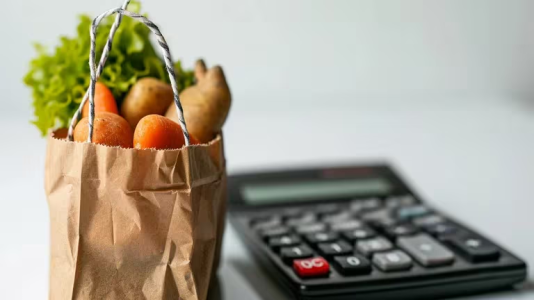Tjas
New member
Food prices have increased almost 70% since Milei took office: which products have risen the most - Infobae

Source:

Los precios de los alimentos aumentaron casi 70% desde que asumió Milei: qué productos subieron más
Según un informe privado, el rubro de mayor incremento fue el de almacén, con una suba de 75,16%. En febrero una familia necesitó más de $310.000 para alimentarse
March 06, 2024
According to a private report, the item with the greatest increase was warehouse, with an increase of 75.16%. In February, a family needed more than $310,000 to feed themselves

Fruits and Vegetables increased 68.95% in the last three months
Food prices increased by up to 69.7% since Javier Milei became president last December, according to the Neighborhood Price Index (IBP) of the Institute for Social, Economic and Citizen Policy Research (ISEPCi)
The item that increased the most among the foods in the Basic Food Basket was warehouse food with 75.16%, followed by Fruits and Vegetables with 68.95%, while meats increased 62.01%.

The warehouse category rose 75.16% in the last three months
As for February, according to the ISEPCI monthly survey in 850 local businesses in 20 districts of the Buenos Aires suburbs, basic foods rose 14.12%.
Thus, a family of two adults and two small children that in November 2023 needed $182,905.48 per month to feed themselves, in February required $310,431.58 .
If the values of the Total Basic Basket (CBT) are considered, which in addition to food includes health, education, transportation, household rates, among others; The same family of four that needed $393,243.07 in November last February required $665,011.27.

A typical family needed $310,431.58 to feed themselves in February
In this way, neither the minimum retirement with a March bonus ($205,000) nor the Minimum Living and Mobile Wage ($202,800) are enough to cover either of these two baskets.
How high would inflation have been in February?
While waiting for Indec to publish the Consumer Price Index (CPI), different consulting firms estimated that February inflation was around 15%, in line with what the government expected.For EcoGo, “February inflation was 15.9% monthly. This means a reduction of 0.4 percentage points compared to the previous week's projection. The decrease responds to a slowdown in food inflation, as a result of a lower record among those consumed outside the home than estimated.”
Regarding food, the consultant pointed out that “the weekly increases in food seem to have consolidated at around 3%. Thus, inflation of food consumed within the home would have been 14.6% in February. If the increases recorded in food consumed outside the home are also considered, food inflation would have been at 14.2 percent.”
The estimates from the C&T consulting firm for the GBA region were slightly higher. They estimate that last month inflation reached 16.3%. Broken down, food rose 11%.
“There were very important moderations in several relevant food items, such as meats, baked goods and oils and fats, and on the contrary, a very strong acceleration in fruits. However, these moderations took place, above all, between the end of January and the beginning of February; In the following weeks, a greater rate of increase was observed,” the report said.
According to Focus Market, among mass consumption products, in the top 10 of those that rose the most in February are: laundry detergent 46.6%, rice 46.4%, disinfectants 40.4%, razors 39.1%, toothpastes 34.4%, broths 31.7%, diapers 29.5%, premixes 25.4%, toilet soap 24.5%, and snacks 18.1%, among others.
In contrast, “the Personal Care and Cleaning categories had a significant drop in February to 5.8% and 7.1% monthly, respectively after average increases of 40% in January. In turn, food rose 7.9% on average and beverages rose to 13.4%, being the category of the mass consumption products family with the highest monthly price variation. During the month, sales in mass consumption suffered a drop of 19.5% year-on-year,” the report highlighted.
In this framework, Milei recently said that “the market consensus would be saying that it is around 15%, and when you subtract the statistical drag, we are very close to single digits. Inflation is clearly going down .”






